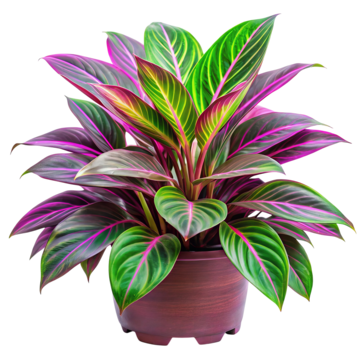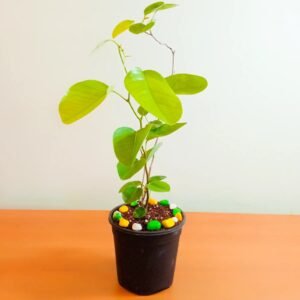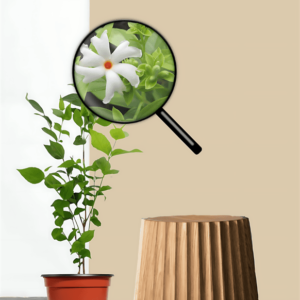Description
The Ruhiya Plant: A Botanical and Cultural Treasure
The Ruhiya plant, also known as Spiritus Vitae in ancient texts, is a rare and revered plant species native to the remote highland forests of Central Asia and parts of the Eastern Himalayas. Often described as the “plant of the soul” or “breath of the spirit,” Ruhiya has captured the fascination of botanists, herbalists, and spiritual seekers alike. Its name derives from the word “ruh,” meaning “spirit” or “soul” in several Semitic and Indo-Aryan languages, reflecting the plant’s deep-rooted association with inner vitality, consciousness, and transcendence.
Botanical Description
The Ruhiya plant is a perennial herbaceous shrub, typically growing between 1.5 to 2 meters tall. It thrives in shaded, humid environments and is often found in rich, loamy soils near mountain springs and waterfalls. The plant’s most distinguishing feature is its iridescent leaves, which shimmer in hues of green, violet, and silver under sunlight. These ovate, slightly serrated leaves are coated with a thin, almost waxy layer of fine hairs that protect them from fungal infection and excessive moisture loss.
Ruhiya flowers are a botanical marvel. Blooming only at dawn during specific lunar phases, the flowers are star-shaped with five to seven translucent petals, glowing faintly in the dark due to a phenomenon botanists refer to as bioluminescent respiration. The center of the flower contains a golden core rich in nectar, drawing in rare pollinators such as moon moths and nectar bats.
The roots of the plant grow deep into the earth and form a tangled web that mirrors the shape of branching neural pathways. These roots contain the highest concentration of the plant’s active compounds and have been used in traditional medicine for centuries.
Ecological Role
Ruhiya plays a vital ecological role in its native habitat. It serves as a keystone species for several high-altitude pollinators, many of which depend exclusively on its seasonal blooming for sustenance. The plant also enriches the soil with its nitrogen-fixing properties and helps prevent erosion in fragile mountain ecosystems.
Despite its ecological importance, Ruhiya is becoming increasingly rare due to habitat loss, overharvesting, and climate change. Conservation efforts are currently underway, supported by local governments and international biodiversity organizations.
Medicinal and Therapeutic Properties
Traditional medicine systems, such as Tibetan Sowa-Rigpa and Himalayan Ayurveda, have long revered Ruhiya for its healing properties. Healers and shamans use extracts of the plant for a variety of purposes, including:
- Respiratory health: The leaves, when brewed into tea, are believed to ease breathing, clear the lungs, and soothe symptoms of asthma and bronchitis.
- Mental clarity: The root is dried and ground into powder, often used in small doses to enhance cognitive function and mental focus.
- Sleep and dreams: A tincture made from the flower petals is consumed in ritual contexts to promote deep sleep, vivid dreams, and spiritual visions.
- Anti-inflammatory: Topical salves containing Ruhiya extract are used to reduce inflammation and pain in joints and muscles.
Modern research has identified a unique alkaloid in Ruhiya—Ruhinin—which shows promise as a neuroprotective agent and is currently being studied for potential applications in treating neurodegenerative diseases like Alzheimer’s and Parkinson’s.
Cultural and Spiritual Significance
The Ruhiya plant holds profound spiritual significance in many indigenous cultures. In the folklore of the Amdu and Gyal tribes, it is said to be the “first plant to grow on Earth,” gifted by the mountain spirits to heal the wounds of humanity. It is often associated with rituals of cleansing, protection, and rebirth, and features prominently in the ceremonies of shamanic traditions.
During the spring solstice, a festival called “Ruhiya Darshan” is held in mountain villages, where villagers gather to honor the plant. They create intricate mandalas using dried petals and leaves, and perform songs and dances intended to invoke the spirit of the plant, asking for blessings of health, fertility, and spiritual growth.
In modern holistic wellness circles, Ruhiya has become a symbol of inner alignment and conscious living. It is often incorporated into spiritual retreats, meditation practices, and herbal ceremonies.
Scientific and Ethical Concerns
While the therapeutic potential of Ruhiya is significant, its popularity has also raised concerns. Unregulated harvesting has led to a dramatic decline in wild populations. Ethical questions have been raised about the biopiracy of indigenous knowledge, where corporations and researchers extract genetic material and traditional wisdom without proper acknowledgment or benefit-sharing.
Efforts are being made to establish sustainable cultivation practices and community-based conservation initiatives. Ethical sourcing certifications and fair-trade models are being proposed to ensure that local communities benefit economically while also protecting their sacred relationship with the plant.
Cultivation and Use in Modern Wellness
Cultivating Ruhiya outside its native environment has proven challenging, as the plant requires a precise combination of altitude, humidity, soil composition, and lunar cycles to thrive. However, some botanical gardens and research institutions have succeeded in creating controlled microclimates to grow Ruhiya for study and limited medicinal use.
In the wellness industry, Ruhiya appears in a variety of products:
- Essential oils for aromatherapy
- Teas and tinctures for stress relief and mental clarity
- Bath salts and creams infused with Ruhiya extract
- Incense and smudge sticks used in meditation and energy healing
However, due to its rarity and cost, authentic Ruhiya products remain niche and are typically marketed as premium wellness items.
Conclusion
The Ruhiya plant is a living testament to the deep connections between nature, healing, and the human spirit. Whether appreciated for its unique botanical characteristics, revered for its cultural significance, or researched for its promising pharmacological properties, Ruhiya continues to inspire awe and reverence. As with all sacred plants, it calls for a relationship of respect, stewardship, and gratitude—reminding us that true healing begins not just with consumption, but with connection.





 SUPARI PALM -PLANT
SUPARI PALM -PLANT 

Reviews
There are no reviews yet.